
Brie Arthur, Mark Weatherington, Anne Stafford, me-Raulston Arboretrum Symp.2018
Last weekend, I was lucky enough to be one of three speakers at the J.C.Raultston Arboretum Winter Symposium. The other two speakers, Brie Arthur and Anne Spafford, were a real treat – energetic, knowledgeable, and on a mission to interest gardeners in foodscaping and pollinator gardens.

John and Jill Hoffman, me after autographing my book for them

Carex scaposa ‘Cherry Blossom’
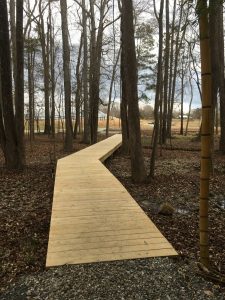
Boardwalk through Carex test area at Hoffman
Before the symposium, I was able to visit Hoffman Nursery which is one of the leading ornamental grass nurseries in the country. I was treated to lunch by my friends John and Jill Hoffman and their marketing director Shannon Currey who led me through the nursery to see how they are expanding with automation and a Laotian work force. They are working hard on their display gardens and I know it will look very different when I return to Raleigh this summer for the PPA symposium. While there, Shannon introduced me to their new sedge, Carex scaposa ‘Cherry Blossom’ that has a pink inflorescence. This is bound to be a big hit. I loved walking through an area on a boardwalk that bisects their Carex trial area.
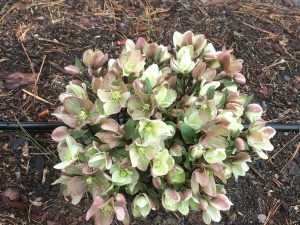
Helleborus ericsmithii ‘Winter Sunshine’
After the Symposium and lunch, Mark Weatherington, director of the Arboretum. and I drove up to Tony Avent’s nursery Plant Delights for a tour of his botanical garden that will eventually become part of NC State and the Arboretum. It was quite evident that a lot has changed since I visited there many years ago. Tony keeps collecting and needs space to display and trial his collections and breeding specimens. The highlight of the winter garden is the innumerable hellebores – so many sizes and colors. I was amazed by the number of blooms on some of his specimens.
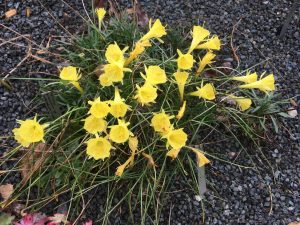
Narcissus bulbocodium
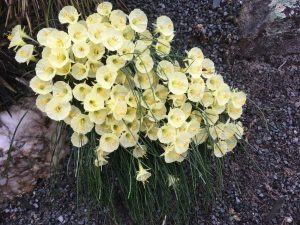
Narcissus romieuxii
As we walked around, I noticed some of his early blooming Narcissus. These hoop types are really charming. I know that Narcissus bulbocodium is hardy in zone 6. I’ll be ordering N.romieuxii to trial for hardiness in the fall.
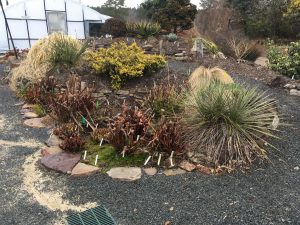
Dry area above, wet area below
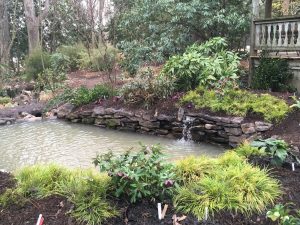
Acorus gramineus ‘Minimus Aureus’ and hellebore beside retention pond under high shade
Many of his new beds are home to both dry and wet loving plants by berming the area for dry loving plants and creating depressions below for wet loving plants. The wet areas as well as some detention ponds absorb all of the runoff on the property. As I travel the country, I have noticed that most detention ponds are ugly as sin but not these and I can hardly wait to see them this summer when they will be surrounded by fully flushed plants, some of which will be in bloom.
Traveling is eye opening but one of these days I should stay home and design.


0 Comments